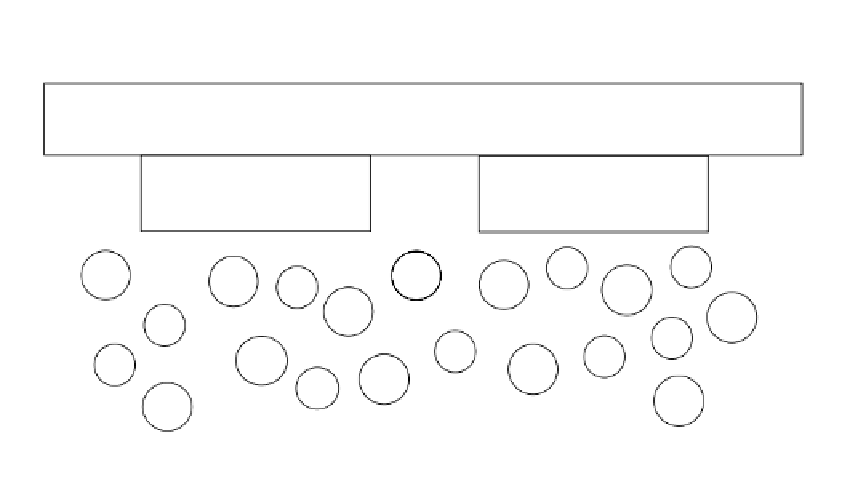Biomedical Engineering Reference
In-Depth Information
2
1
h
h
Glass substrate
Transparent metal electrode
Transparent metal electrode
bR patch
hR patch
Cl
−
Cl
−
H
3
O
+
H
3
O
+
H
3
O
+
H
3
O
+
Cl
−
H
3
O
+
H
3
O
+
H
3
O
+
Cl
−
Cl
−
Cl
−
Cl
−
H
3
O
+
Cl
−
H
3
O
+
H
3
O
+
Cl
−
H
3
O
+
H
3
O
+
Electrolyte solution
FIGURE 15.22
Multisensor array. Electrode patches similar to what is shown in Figure 15.20 are made of different pigment thin
films, such as bR and hR. Each patch is interrogated by focused laser beams to elicit photoelectric responses,
which report local concentrations of H
and Cl
-
, respectively.
the purple membrane into a current carried by electrons in the conduction band of the
metal electrode. With the exception of some redox proteins, this interfacing problem will,
in general, arise in reconstituted protein systems that generate DC photocurrents. Even
with redox proteins, interfacing that permits the DC current to go through the electrode
requires special bridging molecules that link the protein to the metal electrode.
Greenbaum [107,108] studied the photoelectric signal in isolated thylakoid (chloroplast)
membranes containing the photosystem I NADP
-ferredoxin-oxidoreductase. The photo-
system I transfers electrons from plastocyanine at the thylakoid space (i.e., the space
enclosed by a thylakoid) across the membrane to the enzyme NADP
-ferredoxin-oxidore-
ductase, located at the stromal surface. Greenbaum deposited colloidal platinum on the
reducing end (stromal surface). A DC photocurrent generated in the system was thus
made observable. Electrons are intercepted by the colloidal platinum before they are
processed by NADP
-ferredoxin-oxidoreductase.
Aizawa [109] studied an enzyme (metal) electrode based on immobilized glucose oxi-
dase, which is a redox enzyme. Interfacing in this type of biosensor requires facilitation of
electron transfers from the active site of the enzyme protein to the metal electrode. Various
methods have been used, such as electron mediators, electron promoters, and molecular
wires, to accomplish this purpose. For example, a conducting polymer, polypyrrole,
deposited on the electrode surface, was used to form electron wires that facilitate electron
transfers to and from the metal electrode.
Interfacing technology developed for redox proteins is unsuitable for detecting the DC
photocurrent generated by the purple membrane primarily because bR is not a redox pro-
tein. A solution for this problem could be proposed on the basis of reverse engineering of
the photoreactions in the photosynthetic reaction centers of green plants [75]. Let us take
a closer look at how the above-mentioned Photosystem I operates in vivo (see [110] for a
concise review of green plant photosynthesis). In chlorophyll-based photosynthetic
systems (e.g., Photosystem I and Photosystem II of green plants and the reaction center of








